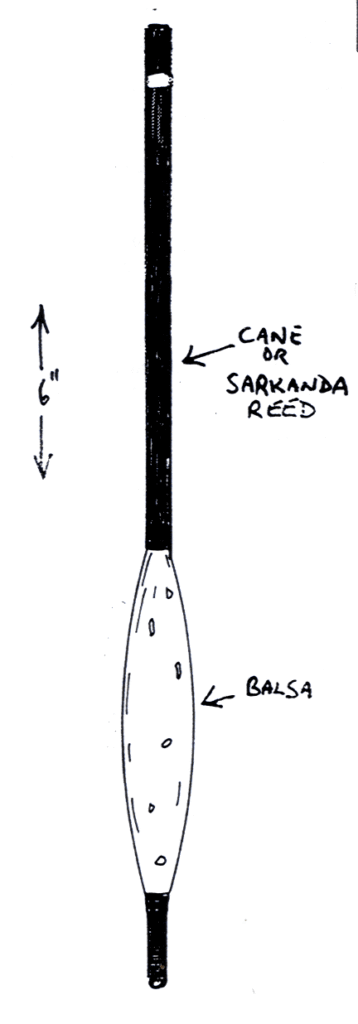THE DUCKER WAGGLER

The ducker was recognized primitively as a running water body waggler to combat a downstream wind, although its application on still water was just as productive. Introduced into angling in the 1920s became one of the most popular floats in its era, particularly in the 1950s, used and illustrated widely by the all-great old timers, namely Dick Walker. Fred I Taylor, Billy Lane. Although perhaps the materials have altered and shotting patterns clanged, this float could well be useful in future angling exploits. The float consist of a body and stem, the main materials in the body used to be cork but now these days it has been superseded by balsa or polystyrene The stem of the float used to be all cane, the basic cane material is just as good now as it was then although sometimes the ducker could come in various other materials, such as sarkandas reed or peacock quill.
The size of the ducker is relatively smaller than most other waggler types of floats, very similar to body wagglers, but a smaller version. Sometimes loaded at the base, and these days with a quick-change float adapter for altering the size on the line for a different presentation.
The overall length of the float would be about 6′.-8”, ideal for shallow water fishing with the body as a stabilizer. It is a good float to combat a downstream wind. A venue I used to use this float on was the River Usk in the Wye Valley. This river is fast and shallow, but full of dace up to 14oz in weight. Catching these fish out in the middle in 4ft of water was perfect for the method. With weights of over 50lb bags in a session was very easily achieved, only with this float. The float carrying capacity is about one and a swan shot bulked to lock the float and a couple of dropper number 4 shots down, less if the float was loaded with a brass insert.
Some anglers use the split lock shot method, of shotting up the ducker, this is done by way of locking the float so that the lock shot are about 4” apart, this allows a more direct con- tact upon striking (see diagram) The theory is that the hook sets firmer upon striking.In my experience’s this way of shotting up the float has some draw backs, ie… prone to tangles, less distance upon casting, can only be used in slow or still moving waters, how- ever when it is possible to shot up this way, then I believe it can benefit the angler.

Now Available The Float Manual with 167 of page content
